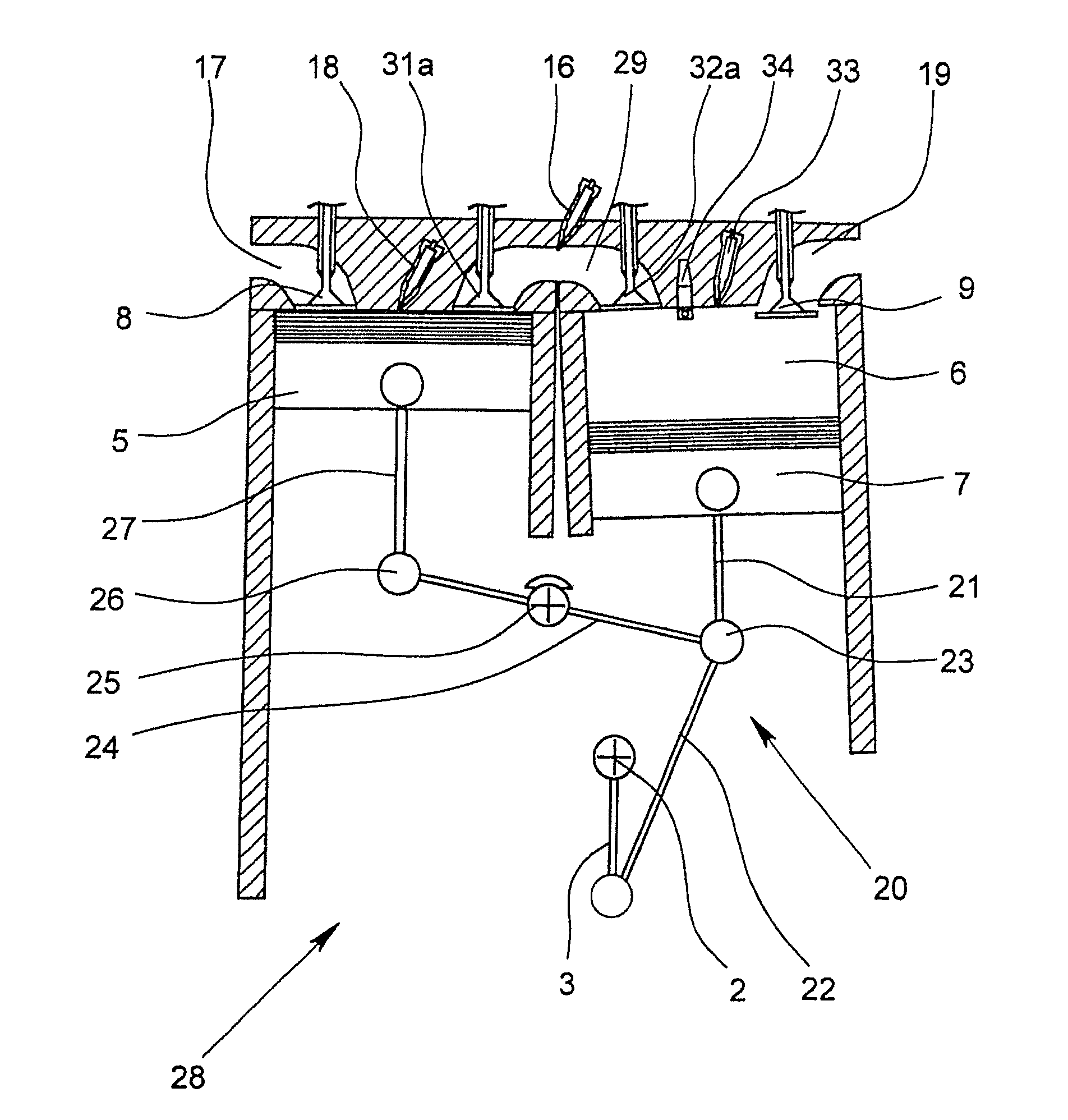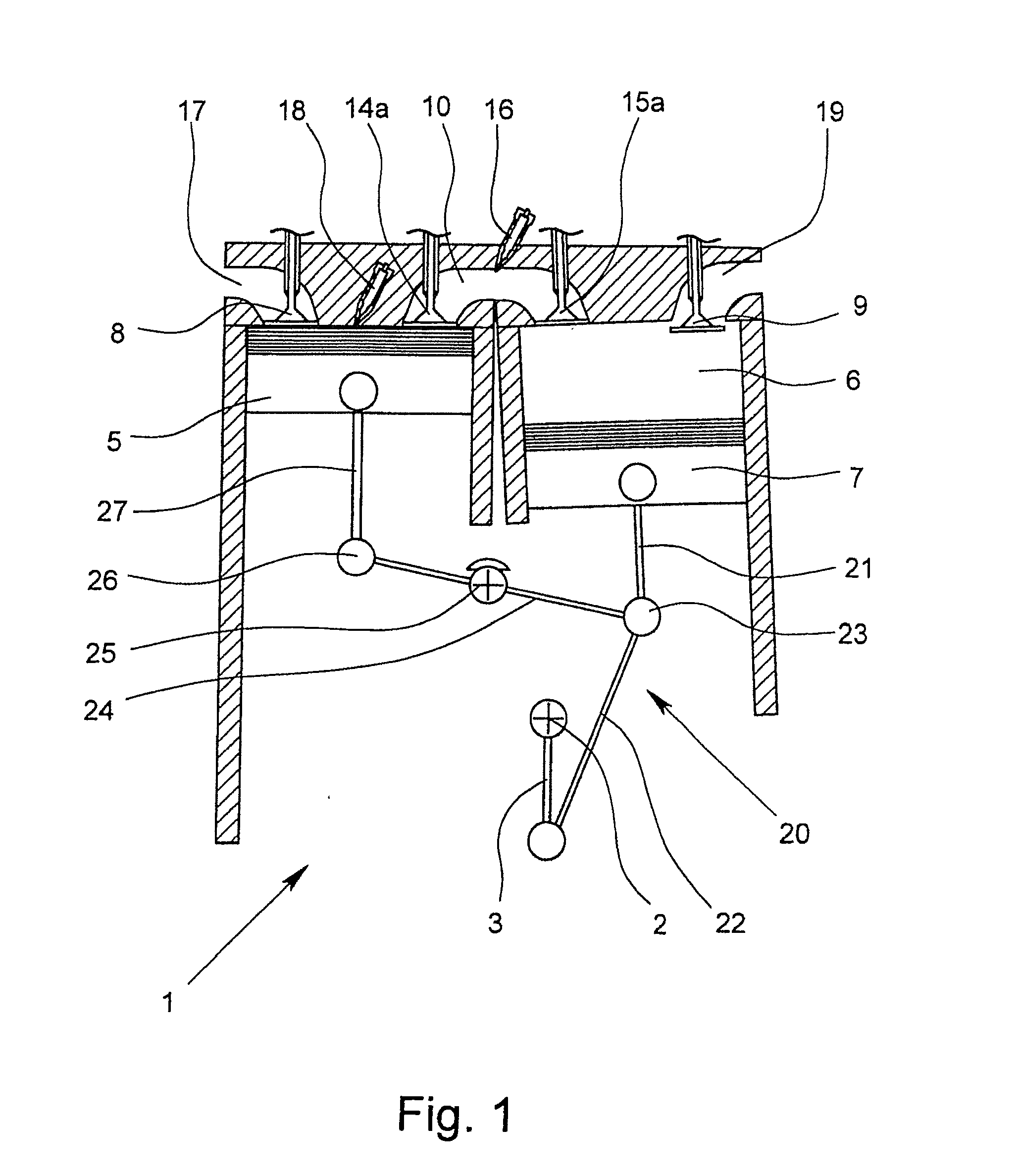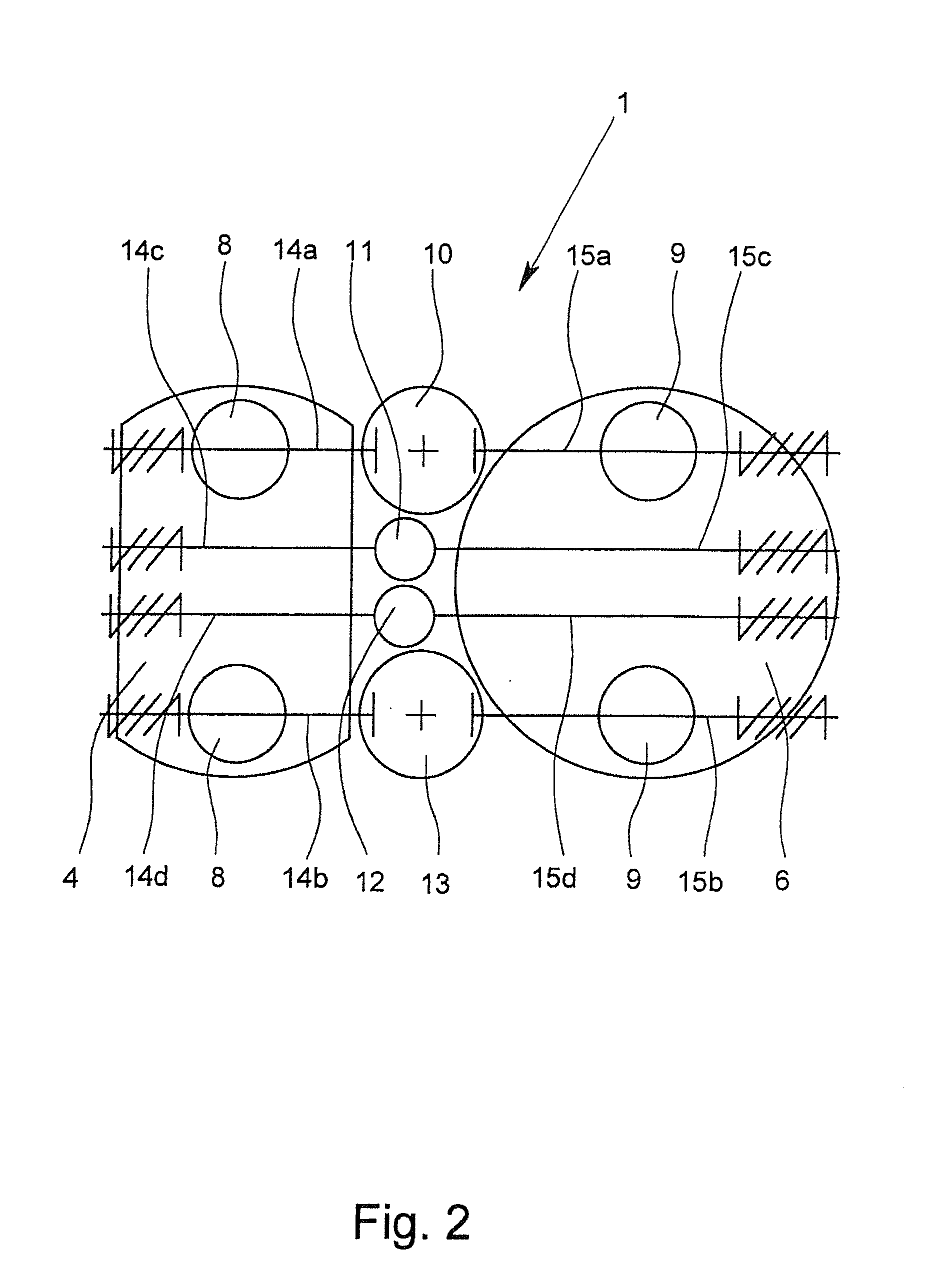Internal combustion engine
a combustion engine and combustion chamber technology, applied in the direction of combustion process measures, fuel systems, mechanical devices, etc., can solve the problems of unsatisfactory efficiency, high emissions, and engine as known from prior art also has an unsatisfactory efficiency, and achieves low pollutant emission, good torque response, and high efficiency.
- Summary
- Abstract
- Description
- Claims
- Application Information
AI Technical Summary
Benefits of technology
Problems solved by technology
Method used
Image
Examples
second embodiment
[0034]FIG. 2 shows an internal combustion engine 1 having four combustion chambers 10-13, wherein the combustion chamber inlet valves 14a-14d, and the combustion chamber outlet valves 15a-15d are arranged perpendicular to the longitudinal axis of the compression cylinder 4, and perpendicular to the longitudinal axis of the working cylinder 6. In doing so, the combustion of the fuel in the combustion chambers 10-13 is least disturbed by the valves 14a-14d, 15a-15d. However, basically, it is also possible that the combustion chamber inlet valves 14a-14d and / or the combustion chamber outlet valves 15a-15d are arranged parallel to the longitudinal axis of the compression cylinder 4 and / or to the longitudinal axis of the working cylinder 6 as represented in FIG. 1.
[0035]As is evident from FIG. 2, the combustion chambers 10 and 13 have a larger combustion chamber volume than the combustion chambers 11 and 12. At low speed in city traffic, when the cylinders have a lower degree of filling,...
fifth embodiment
[0066]FIG. 7 shows an internal combustion engine 28, which essentially corresponds to the embodiment shown in FIG. 6, but in mirrored arrangement of compression piston 5 and working piston 7, which necessitates a different arrangement of the connecting rods for kinematic coupling of the working pistons 5, 7.
[0067]FIGS. 8 to 10 show further embodiments of internal combustion engines 28, wherein the working piston 7 is connected via a hinge to a multi-part link rod 20 with the crankshaft. The link rod 20 has in turn two connecting rods 21, 22, wherein the connecting rods 21, 22 are connected together at their ends by at least one first hinge (pivot pin) 23. The other end of a first connecting rod 21 is pivotably connected to the working piston 7 and the other end of a second connecting rod 22 is pivotably connected with two pivot pins 37, which receive the second connecting rod 22 and during operation, describe a circular path around the rotational axis of the crankshaft. The pivot pi...
PUM
 Login to View More
Login to View More Abstract
Description
Claims
Application Information
 Login to View More
Login to View More - R&D
- Intellectual Property
- Life Sciences
- Materials
- Tech Scout
- Unparalleled Data Quality
- Higher Quality Content
- 60% Fewer Hallucinations
Browse by: Latest US Patents, China's latest patents, Technical Efficacy Thesaurus, Application Domain, Technology Topic, Popular Technical Reports.
© 2025 PatSnap. All rights reserved.Legal|Privacy policy|Modern Slavery Act Transparency Statement|Sitemap|About US| Contact US: help@patsnap.com



